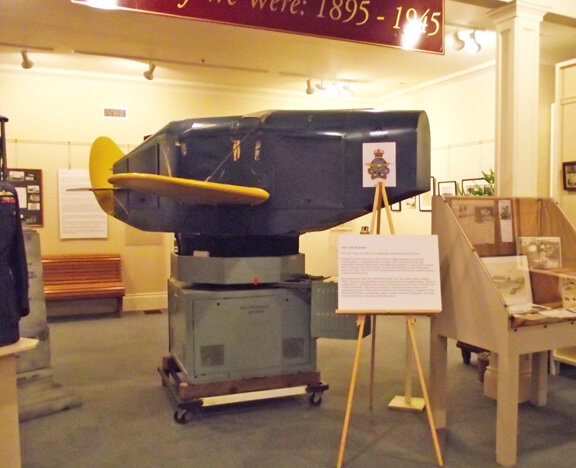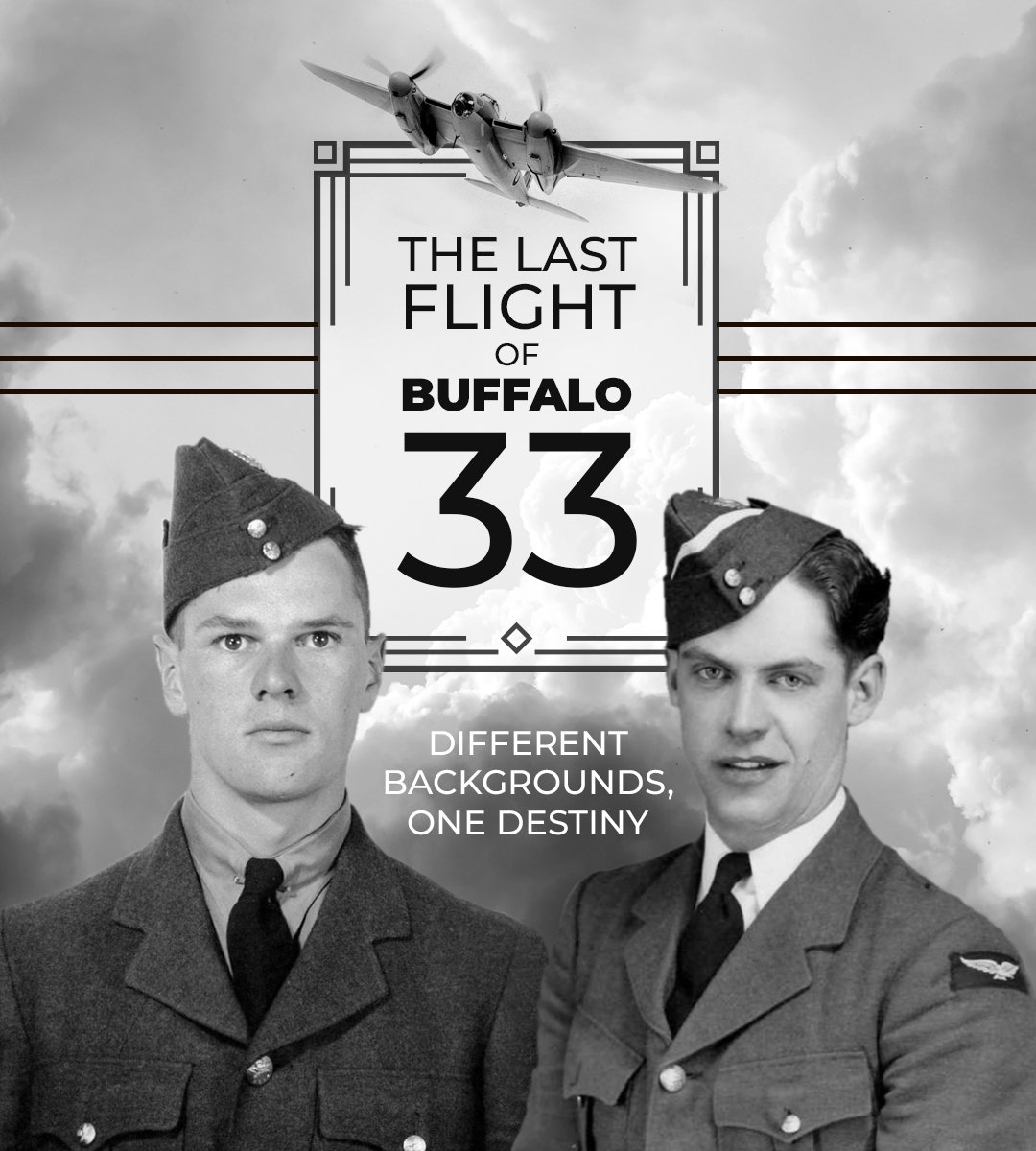A LINK TO VICTORY
About an hour's drive south and west of Ottawa lies the idylic little town of Gananoque. Unknown to most people and even the citizens of the town today, one small factory there played a significant part during the Second World War.
Edwin A. Link (1904 - 1981) moved, with his family, from Indiana to Binghamton, NY, where his father had established the Link Piano and Organ Company. He dropped out of high school and went to work for his father. He learned to build and repair organs, and just about any other machine that needed fixing, experience that would prove to be invaluable. However, all he really wanted to do, was fly.
He needed to scrape together the funds for flying lessons and plane rentals. When his father heard of his flying escapades, he fired him. Fortunately, he was soon rehired. At 24, he persuaded his mother to lend him the money for his first plane. He then spent his spare time giving flying lessons, making air deliveries, and barnstorming at air shows to earn the funds for the loan repayment.
As he struggled with the high costs of learning to fly, he reasoned that a device that simulated the motions of an aircraft could reduce the time needed to train pilots. For 18 months he worked on this idea in the basement of the organ factory, naming his trainer the Pilot Maker.
His sales were few but he was determined and eventually enabled it to simulate different weather conditions which would allow pilots to "fly blind", ie, by their instruments and without reference to the landscape below.
By 1934, he was running out of money. So, he made contact with the US Army Air Corps, pleading for the opportunity to demonstrate his technology. The Corps agreed and on "the" day, Ed took off from Binghamton and flew to the field at Newark, NJ, landing in a "pea soup" fog without incident! The Corps soon followed with an $21,000 order for 6 simulators and Ed was "on his way". [Editor's note: The US Postal Service had contracted with the Air Corps to deliver mail. Sadly, within a month or two, the Corps lost nearly a dozen planes and pilots - all the crashes were in bad weather. Ed's making contact for the demonstration proved to be a life changer, and life saver.]
A hand-coloured Link Company illustration of the Link Trainer set-up. The same illustration appears in black and white in the Link advertisement below. Illustration from Taylor Family archive.
An advertisement for Link Trainers explains the obvious and far reaching benefit of simulated flight over real flight - economics. The Link Trainer was in fact the first true flight simulator - the progenitor of the super-sophisticated full motion simulators of today. In fact the Link Company still lives on today as a division of the multinational L-3 Communications and continues to manufacture simulators.
While an operator looks on, a pilot trainee "dives" his Link Trainer. Many Link trainers survive around the world today. In Canada, a fully functioning Link Trainer exists at the Canadian Harvard Association facility at Tilsonburg, Ontario and several examples live on at museums across the country. Of the more than 10,000 Link Trainers built by Link, half were built in Gananoque by the St. Lawrence River. USAAF Photo
The "flight" in the Link trainer was handled, directed and analyzed by an operator sitting at a station removed slightly from the "flying" part of the trainer. The course and ability of the pilot trainee to follow instructions was plotted on a chart on the table while the operator communicated with the hooded student via intercom. This lovely Link Trainer Operator guides the pilot at Naval Air Station St. Louis during the war. USAAF Photo
Gananoque’s Role
Before and during WWII, Britain had restrictions on buying war goods from non-Commonwealth countries. Link realized that business would only increase if he had a plant in Canada. He owned an island east of Gananoque (pronounced “Gan-an-ock-way”), Perch Island, and frequently flew from Binghamton in his amphibious plane to his cottage. As he always checked in with Customs and Immigration at Gananoque, he got to know the collector of Customs, Ken Mullins. One day he asked Mullins if he knew of a location where he could manufacture Link Trainers, and who he could recommend as its manager. Mullins suggested Keith Taylor and in 1938, the first Link Trainer was built in what became known as the “Link Plant”, later known as the “Cliffe Craft Boat Buildings” and now vacant. Over 5,000 Link Trainers were built in Gananoque and with over 200 employees it was one of the town's most-important businesses.
Edwin Link, aviator and entrepreneur, and a drawing of his Gananoque factory - courtesy of the Arthur Child Heritage Museum in Gananoque and the Taylor Family Archive.
Today, the Link Plant on the banks of the Gananoque River near its confluence with the St. Lawrence lies abandoned, an empty vessel filled with echoes of history. Half of the more than 10,000 Link Trainers built for the Allies were built in this relatively small facility. In the United States alone, more than 500,000 pilots (before and after the war) were trained using simulators created and built by Link, but the end of the war put an end to the Gananoque Link Plant. Photo by Denis Legacey.
Taking his Challenger Ultralight aloft for a photo session, photographer Ian Coristine captured this image of Gananoque about ten years ago. The Link Plant sits on the banks of the smaller Gananoque River just to the right of the bridge. Photo by Ian Coristine 1000islandsphotoart.com.
Looking from the north side of Gananoque out across the breathtaking beauty of the Thousand Islands region to the state of New York in the distance. The Link Plant can be seen below and to the right of the bridge. For more spectacular images of this remarkable region known as the Thousand Islands visit Ian Coristine's website. Photo by Ian Coristine.
The importance of the Link Trainer, in a larger context, was clearly indentified when Winston Churchill, in a speech to the House of Commons, told the House that without the Link trainer the "Battle of Britain" would not have been won.Today, there are only three-living employees from the plant but many family members recall those crucial years, and the pivotal role played by the employees.
During the war years, Ed had another vision that of developing a trainer that would assist pilots in water landings and take-offs. He developed the "Aqua Trainer". Unfortunately,with the development of aircraft carriers, the interest in seaplanes declined and only one “Aqua Trainer” prototype was built.
It is now on permanent display at Clayton, NY, in the Antique Boat Museum. Also on exhibit, at Gananoque’s Arthur Child Heritage Museum, is a fully-equipped Link Trainer - it is part of an important exhibit commemorating Gananoque’s history from 1895-1945.
The Link Trainer facility at pilot training schools was an important part of any prospective aviator's schooling. This Link room at No. 19 Elementary Flying Training School, Virden, Manitoba is typical of the many EFTS and SFTS facilities right across the country with four trainers and operator stations. More than likely, these three trainers came off the assembly line in Gananoque. Photo by Nicholas Morant, DND/NAC PA-140658
Part of the Link display at the Arthur Child Heritage Museum in Gananoque featuring a Pilot Maker trainer. Photo Denis Legace
Most Link trainers, many of which were manufactured in the Binghampton, New York factory, were blue with yellow wings and empennage, mimicking the standard trainer colour scheme of the United States Army Air Force in the prewar years. Even those delivered from the Gananoque plant had this scheme. This one has a distinctive RAF look to it. Later in the war, and due to shortages in materials, the wings were left off all together as well as the functioning ailerons and empennage. Photo by Grahame Higgs
When Ed Link died, he held over 30 patents and he had been a major contributor to the establishment of philanthropic foundations for research in aquaculture, undersea rescue, and undersea mining. His “Link Trainer” made modern aviation possible and he was, truly, an aviation pioneer.
By John and Jim Taylor
This story was reprinted with the kind permission and encouragement of Thousand Islands Life - an on-line magazine for the community and lifestyle of the magical Thousand Islands Region - visit thousandislandslife.com
Author's note: We encourage everyone to see the display at the Arthur Child Heritage Museum. It gives a wonderful-and-interesting picture of Gananoque's colourful history.
By John and Jim Taylor, Gananoque, ON.
The article on the "Link Trainer" was prepared by the sons of Keith Taylor. As children, they grew up knowing the Link family and their parents were very good friends of Ed and Marion Link. Jim and John still live in Gananoque and summer on Tremont Park Island.


















